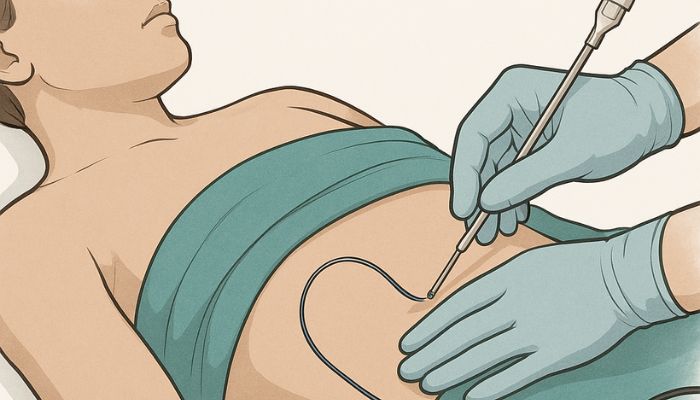Accidents happen when we least expect them—whether it’s a slip, a fender-bender, or a sports injury. The aftermath often includes lingering pain, discomfort, and a long road to recovery. While traditional treatments like painkillers or even surgery have their place, many people are now turning to minimally invasive procedures for effective relief without the downsides of invasive surgery.
If you’re tired of chronic pain slowing you down, this guide explores how these modern treatments can help you heal faster and get back to doing what you love—with less pain, less downtime, and fewer side effects.
Table of contents
- What Are Minimally Invasive Treatments?
- 1. Epidural Steroid Injections
- 2. Nerve Blocks
- 3. Radiofrequency Ablation (RFA)
- 4. Trigger Point Injections
- 5. Platelet-Rich Plasma (PRP) Therapy
- 6. Cryoneurolysis (Nerve Freezing)
- 7. Minimally Invasive Spine Surgery (MISS)
- 8. Joint Injections (Cortisone & Hyaluronic Acid)
- Why Choose Minimally Invasive Treatments?
- A Note on Recovery and Support
- Final Thoughts
What Are Minimally Invasive Treatments?
Minimally invasive treatments are medical procedures that require only small incisions—or none at all—and typically involve advanced imaging, tiny tools, and precise techniques. These options are designed to:
- Target the exact source of pain
- Reduce tissue damage
- Shorten recovery time
- Lower the risk of complications
Whether you’re dealing with back pain, joint stiffness, or nerve issues after an accident, these treatments might be the solution you’ve been searching for.
1. Epidural Steroid Injections
If your accident led to neck or back pain, you might be experiencing nerve inflammation. Epidural steroid injections deliver powerful anti-inflammatory medication directly into the space around your spinal nerves. These injections can:
- Reduce swelling and nerve irritation
- Provide relief for several weeks to months
- Help you avoid surgery altogether
They’re often used for conditions like herniated discs, sciatica, or spinal stenosis that result from impact injuries.
2. Nerve Blocks
A nerve block is exactly what it sounds like: it blocks pain signals sent from specific nerves. This treatment can serve both as a diagnostic tool (to pinpoint the source of pain) and a pain management solution.
Common types include:
- Facet joint blocks for spinal pain
- Peripheral nerve blocks for limb injuries
- Sympathetic blocks for complex regional pain syndrome (CRPS)
Results can last from days to several months, and the procedure is typically done in under 30 minutes.
3. Radiofrequency Ablation (RFA)
Think of RFA as a longer-lasting version of a nerve block. It uses heat generated by radio waves to “quiet down” specific nerves that keep sending pain signals—even after the injury has healed.
Benefits of RFA:
- Pain relief lasting 6–12 months or more
- Quick recovery with minimal discomfort
- Often used for chronic back, neck, or joint pain
It’s especially useful if you’ve responded well to a nerve block and want a more durable solution.
4. Trigger Point Injections
After an accident, muscles may go into spasm, forming tight, painful knots called trigger points. These are common in the shoulders, neck, and lower back.
Trigger point injections involve injecting a small amount of anesthetic or saline directly into the knot. The result?
- Immediate muscle relaxation
- Improved blood flow and mobility
- Relief that can last for weeks
This treatment is quick, low-risk, and often part of a broader physical therapy plan.
5. Platelet-Rich Plasma (PRP) Therapy
PRP therapy uses your body’s natural healing powers to repair damaged tissues. A small amount of your blood is drawn, spun in a centrifuge to concentrate the platelets, and then injected into the injured area.
Common uses after an accident include:
- Tendon or ligament injuries
- Joint pain and stiffness
- Muscle tears
Because it uses your own cells, the risk of allergic reaction is minimal. It’s a favorite among athletes and active individuals looking for a natural recovery boost.
6. Cryoneurolysis (Nerve Freezing)
If heat can ease nerve pain, cold can too. Cryoneurolysis involves freezing a nerve to temporarily stop it from sending pain signals.
This technique is helpful for:
- Post-surgical pain
- Joint pain after trauma
- Chronic nerve pain from previous injuries
Relief typically lasts for a few months, and the nerve eventually regenerates—making it a repeatable option.
7. Minimally Invasive Spine Surgery (MISS)
When conservative treatments aren’t enough, spine surgery may be necessary. The good news? You don’t always need a major operation.
MISS procedures like microdiscectomy or laminotomy are done through tiny incisions using specialized tools and cameras. These surgeries:
- Remove herniated disc fragments
- Relieve pressure on spinal nerves
- Involve less blood loss and shorter hospital stays
They’re a game-changer for accident victims with serious disc or nerve compression issues.
8. Joint Injections (Cortisone & Hyaluronic Acid)
If your accident left you with an achy shoulder, stiff knee, or sore hip, joint injections can offer much-needed relief.
- Cortisone reduces inflammation and swelling
- Hyaluronic acid lubricates joints and improves movement (especially for knees)
These injections can provide fast, localized relief and are often done in your doctor’s office with little to no downtime.
Why Choose Minimally Invasive Treatments?
Let’s face it—nobody wants to be out of commission for weeks or deal with the stress of surgery. That’s why minimally invasive treatments are so popular. They offer:
- Faster recovery: Most people resume daily activities within days
- Lower risks: Fewer complications and reduced infection rates
- No general anesthesia: Most procedures are done with local numbing
- Custom care: Treatments can be tailored to your specific injury and pain type
A Note on Recovery and Support
Even though these treatments are less invasive, they work best when combined with physical therapy, lifestyle adjustments, and ongoing medical guidance. Think of them as part of a full toolkit for healing—not just a quick fix.
Final Thoughts
If accident-related pain is holding you back, minimally invasive treatments might be the key to unlocking your recovery. From targeted injections and nerve treatments to regenerative therapy and advanced spine care, there are now more options than ever—without the need for major surgery.
Talk to a pain management specialist or orthopedic doctor to explore which approach fits your needs. With the right treatment plan, you can move forward with confidence—and start living pain-free again.




No comment